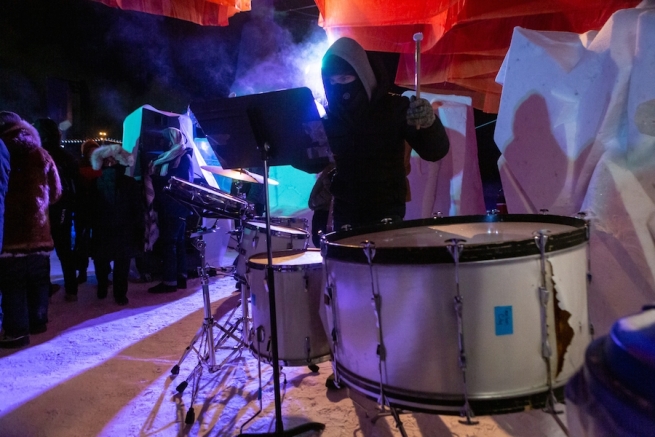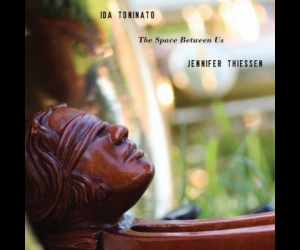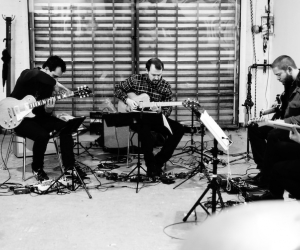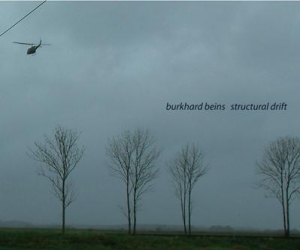
The twenty-eighth edition of the Winnipeg New Music Festival (WNMF) opened by continuing a tradition of bringing listeners out to unusual, wonderful venues, but this year broadened its scope asking both performers and audience to one evening risk the potential extremes outside in Winnipeg’s notoriously frigid winter elements.
Norwegian artist Terje Isunset arrived in town early to pull some ice off the Red River, which he then fashioned into a number of percussion and wind instruments for a concert on that same river. The University of Manitoba Percussion Ensemble opened the evening with an impish performance of John Luther Adams’ Inuksuit that brought musicians through the crowd, settled people into the frigid environs and even featured some impromptu accompaniment from a nearby train. Isunset then took the stage and put on a fine show featuring the Canadian premiere of his Beauty Of Winter. Unfortunately, half the crowd filed out early, having absorbed enough of the -30°C weather. Mercifully, no other performance was mounted outdoors, and the remainder of the evening shows took place at Centennial Concert Hall.
The Montreal-based groups Collectif9 and Architek collaboratively ran the show for an entire memorable night, with a series of pieces by Canadian composers who drew from the poetry of Kaie Kellough. The ensembles took the unusual step of playing movements from these pieces out of sequence, alerting the audience to the fact that rotating video projections were the skeleton key to which a composer’s work was being heard at any given time.
Two of those pieces in particular stretched the format of the program even further. Nicole Lizée offered Folk Noir/Canadiana, a characteristically remarkable musical work that offered the most unforgettable moment of the evening. Volume tapered off as the word “hey” was repeated, and the music suddenly offered space for various instruments to accordingly announce, “Hey, listen to me,” as they alternated taking moments at the forefront. Further, Lizée created the visual counterpart to her section of the music, cued by an apocryphal tale spun by one of the percussionists, which turned out to be riotously funny once the video caught up to the story.
Backyard Blocks showcased Eliot Britton’s persistent thirst for working new technologies into concert performance. In this case, audience members were asked to use their mobile devices to play sounds from Britton’s Web site during specific points in the show. Vague instructions regarding this facet of the piece prevented any synchronization between participating audience members in terms of when to start and finish. Scanning the room, it was clear that some in the crowd were confused, others annoyed by how long others left the sounds playing. Was this a feature or a bug? Regardless, positive marks to Britton for subverting the typical treatment of such devices in a concert hall.
The Canadian Music Centre Prairie Region Emerging Composer Competition offers the winner a world premiere at the WNMF. This year’s winner, Scott Ross-Molyneux, introduced his composition Ehrykaviss as being inspired in both title and content by the imaginative conjurings of a childhood spent exploring various biomes of western Canada. After floating upon flutes, the piece parachuted lightly into a placid dell, before the jarring appearance of foreboding strings that revealed fantastic creatures. The piece did an excellent job of creating space for listeners to paint their own pictures. Another standout from the Orchestral Voices of the Future concert was 3 Portraits, a work by Halifax composer Amy Brandon inspired by a dying godmother. It opened with extended bass and cello lines before giving way to a sweeping romantic melody that resolved beautifully. Brandon even managed to sneak in a cello solo so fabulously weird that some of the players onstage were visibly laughing. Curtis Wright’s Thuban & Eltanin, the latest in a series of works inspired by various north stars, effectively juxtaposed rapid, gushing melodies with an eerie undercurrent. The bright side quickly won out, though perhaps too quickly—the piece almost felt like it ended just before launching into the cosmos to join those other north stars.
An unquestionable high point of WNMF was the world premiere of A Child’s Dream of Toys by Vivian Fung, who described the work as having, “both the playfulness and attention span of a three year-old”—inspired by Fung’s own recent experience raising a child. Delicious from the very beginning, the piece featured striking shifts in tempo, instrumentation, and focus which were deftly handled by the Winnipeg Symphony Orchestra. Suddenly, a referee’s whistle signalled a change of mood, as though the child went too far and was given a timeout by some authority figure. Controlled frivolity returned for the boisterous closing section of the piece, which left in its wake a palpable buzz throughout the audience.
This year’s festival was programmed by the Winnipeg Symphony Orchestra’s new conductor Daniel Raiskin and composer-in-residence Harry Stafylakis. The latter proudly identifies as a huge metal fan, and the festival gave a full night-and-a-half of its program to progressive metal band Animals As Leaders. For a couple of nights, this meant a large portion of the audience sported black T-shirts and long hair, a signal that the festival had caught some attention from an atypical crowd. It also served as a welcome reminder that “new music” has many colours, and that musicians who identify with the metal idiom are capable of as much precision, subtlety, power, and beauty as any others.
Photo by Matt Duboff.


